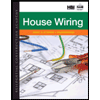2 m 2 m 3 m 3 m 3 m 3 m B Figure 4.1 5k N/m K 3 m B M N 10k N/m G P Figure 4.2 M K 1) Find the tension forces in cables IO and NP. 2) Noting that sub-structures ABHIG and HJLNM are internally stable, we can treat them as two rigid bodies with a pin connection at point H and corresponding supports, as illustrated in Figure 4.2. Draw the free body diagrams for sub-structures ABHIG and HJLNM. 3) Determine the forces acting on sub-structures ABHIG and HJLNM. 4) Once knowing the external forces acting on each sub-structure, we can further obtain the forces in each member of the sub-structures. Determine the forces in member ML and EH. L
2 m 2 m 3 m 3 m 3 m 3 m B Figure 4.1 5k N/m K 3 m B M N 10k N/m G P Figure 4.2 M K 1) Find the tension forces in cables IO and NP. 2) Noting that sub-structures ABHIG and HJLNM are internally stable, we can treat them as two rigid bodies with a pin connection at point H and corresponding supports, as illustrated in Figure 4.2. Draw the free body diagrams for sub-structures ABHIG and HJLNM. 3) Determine the forces acting on sub-structures ABHIG and HJLNM. 4) Once knowing the external forces acting on each sub-structure, we can further obtain the forces in each member of the sub-structures. Determine the forces in member ML and EH. L
Steel Design (Activate Learning with these NEW titles from Engineering!)
6th Edition
ISBN:9781337094740
Author:Segui, William T.
Publisher:Segui, William T.
Chapter2: Concepts In Structural Steel Design
Section: Chapter Questions
Problem 2.3P: A beam is part of the framing system for the floor of an office building. The floor is subjected to...
Related questions
Question
All members are of negligible weight and all joints are pin connections. The structure is supported by two hinges at point G and K and one roller at point A. Member OP is subjected to a distributed load and is held by two cables IO and NP. The entire system is in equilibrium.

Transcribed Image Text:2 m
2 m
3 m
3 m
3 m
3 m
B
Figure 4.1
5k N/m
K
3 m
B
M
N
10k N/m
G
P
Figure 4.2
M
K
1) Find the tension forces in cables IO and NP.
2) Noting that sub-structures ABHIG and HJLNM are internally stable, we can treat them as two rigid
bodies with a pin connection at point H and corresponding supports, as illustrated in Figure 4.2.
Draw the free body diagrams for sub-structures ABHIG and HJLNM.
3) Determine the forces acting on sub-structures ABHIG and HJLNM.
4) Once knowing the external forces acting on each sub-structure, we can further obtain the forces
in each member of the sub-structures. Determine the forces in member ML and EH.
L
Expert Solution
This question has been solved!
Explore an expertly crafted, step-by-step solution for a thorough understanding of key concepts.
Step by step
Solved in 2 steps with 8 images

Recommended textbooks for you

Steel Design (Activate Learning with these NEW ti…
Civil Engineering
ISBN:
9781337094740
Author:
Segui, William T.
Publisher:
Cengage Learning


Materials Science And Engineering Properties
Civil Engineering
ISBN:
9781111988609
Author:
Charles Gilmore
Publisher:
Cengage Learning

Steel Design (Activate Learning with these NEW ti…
Civil Engineering
ISBN:
9781337094740
Author:
Segui, William T.
Publisher:
Cengage Learning


Materials Science And Engineering Properties
Civil Engineering
ISBN:
9781111988609
Author:
Charles Gilmore
Publisher:
Cengage Learning

Engineering Fundamentals: An Introduction to Engi…
Civil Engineering
ISBN:
9781305084766
Author:
Saeed Moaveni
Publisher:
Cengage Learning

Residential Construction Academy: House Wiring (M…
Civil Engineering
ISBN:
9781285852225
Author:
Gregory W Fletcher
Publisher:
Cengage Learning